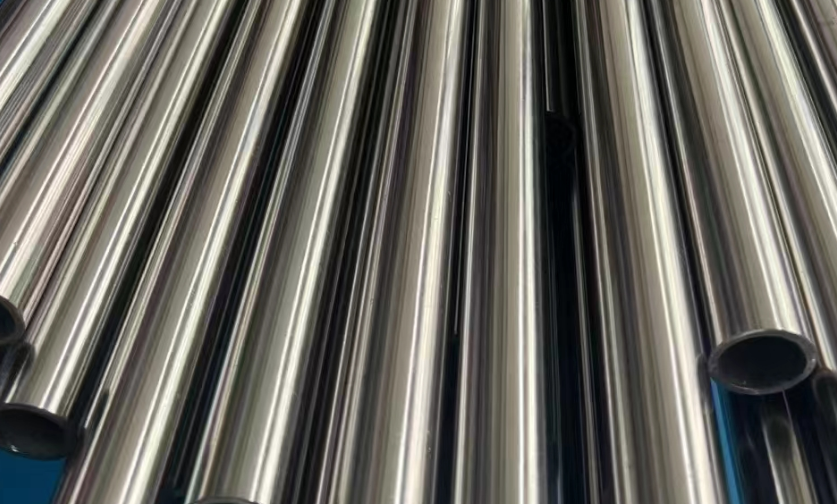Nowadays, stainless steel alloys occupy a unique position in our daily lives due to their corrosion resistance, mechanical strength, and versatility. Two such alloys, 410 and 416 stainless steel, are frequently employed in various industries for their specific properties. While they share some common characteristics, there are distinct differences between these two alloys that make them suitable for different applications. So, 410 Stainless Steel vs 416 – what’s the difference? This article aims to provide a comprehensive comparison of 410 stainless steel and 416 stainless steel, delving into their composition, mechanical properties, corrosion resistance, workability, and common applications.

410 Stainless Steel vs 416 – What’s the Difference?
410 Stainless Steel vs 416 – 1. Composition
The fundamental difference between 410 and 416 stainless steel lies in their chemical composition. Both alloys belong to the martensitic class of stainless steel, which is characterized by their high carbon content. However, they differ in the addition of other elements.
410 stainless steel is primarily composed of iron, chromium (around 12%), and carbon (up to 0.15%). It may also contain small amounts of manganese, silicon, phosphorus, sulfur, and, in some cases, nickel and molybdenum. The chromium content is sufficient to provide good corrosion resistance in mild environments.
On the other hand, 416 stainless steel is a variant of 410 with the addition of phosphorus, sulfur, and, sometimes, selenium. These additions are made to enhance the alloy’s machinability, allowing for easier cutting and forming operations. The phosphorus content in 416 stainless steel is typically higher than in 410, ranging from 0.04% to 0.08%.
410 Stainless Steel vs 416 – 2. Mechanical Properties
Both 410 and 416 stainless steel alloys exhibit good mechanical properties, including high tensile strength and hardness. However, their specific properties can vary depending on the heat treatment applied.
410 stainless steel, when properly heat treated, can achieve high hardness levels, making it suitable for applications requiring wear resistance. It also retains good ductility and toughness, allowing it to withstand impact and stress without fracturing.
416 stainless steel, due to its added phosphorus and sulfur, has improved machinability but slightly reduced ductility and weldability compared to 410. It is still a strong and durable alloy, but its machinability enhancement comes at the cost of some mechanical properties.
410 Stainless Steel vs 416 – 3. Corrosion Resistance
When it comes to corrosion resistance, 410 stainless steel is generally more resistant to corrosion than 416 stainless steel. The chromium content in 410 forms a protective oxide layer on the surface, which resists oxidation and corrosion in most environments. However, its resistance decreases in harsh environments, such as saltwater or acidic conditions.
416 stainless steel, while still corrosion-resistant, is less so than 410 due to its higher phosphorus content. Phosphorus can weaken the protective oxide layer, making the alloy more susceptible to corrosion. Therefore, 416 is not recommended for use in severe corrosive environments.
410 Stainless Steel vs 416 – 4. Workability
In terms of workability, 416 stainless steel has a clear advantage over 410. The addition of phosphorus and sulfur improves the alloy’s machinability, allowing for faster and easier cutting, drilling, and forming operations. This makes 416 stainless steel a popular choice for applications requiring complex machining or forming.
On the other hand, 410 stainless steel can be challenging to machine due to its hardness and tendency to work-harden during machining. It requires slower cutting speeds and more frequent tool changes, increasing production time and cost.
410 Stainless Steel vs 416 – 5. Applications
The choice between 410 and 416 stainless steel depends largely on the specific requirements of the application. 410 stainless steel is commonly used in applications where corrosion resistance and mechanical strength are essential, such as cutlery, surgical instruments, fasteners, and valves. Its hardness and wear resistance make it suitable for use in high-stress environments.
416 stainless steel, on the other hand, is frequently employed in applications where machinability is a critical factor. It is often used in the automotive industry for parts that require precise machining, such as gears, shafts, and bearings. Its improved machinability allows for faster production and reduced manufacturing costs.
Conclusion
In conclusion, 410 stainless steel and 416 stainless steel are both valuable alloys with unique properties and applications. 410 offers superior corrosion resistance and mechanical strength, making it suitable for demanding environments. On the other hand, 416 provides enhanced machinability, allowing for easier and faster manufacturing processes.
Thank you for reading our article and we hope it can help you to have a better understanding of the differences between 410 Stainless Steel vs 416. If you are looking for 410 Stainless Steel and 416 suppliers online now, we would advise you to contact Sino Stainless Steel.
As a leading supplier of stainless steel products from Shanghai China, Sino Stainless Steel provides customers with high-quality stainless steel sheets, stainless steel tubes, stainless steel pipes, stainless steel strips, stainless steel coils, stainless steel plates, and stainless steel bars at a very competitive price.
 :+86-13012867759
:+86-13012867759  :export86@sino-stainless-steel.com
:export86@sino-stainless-steel.com
In all, 699 women were included in the study does priligy work